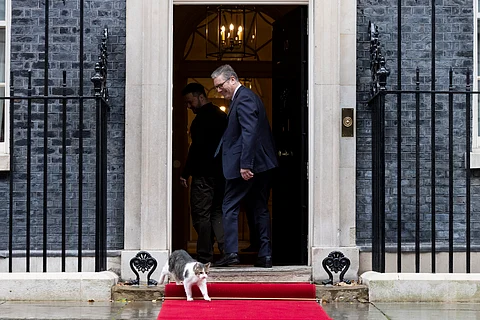

The United Kingdom has reportedly dropped plans to deploy as many as 30,000 troops to Ukraine’s ports, cities, and potentially the frontlines in the event of a ceasefire between Russia and Ukraine.
According to The Times, British officials are now redirecting their efforts toward conducting “air reassurance flights” over western Ukraine using F-35 and Typhoon fighter jets. Any future ground deployment, the report states, would be limited to areas far from the active frontlines and would focus on providing logistical and operational support to the Ukrainian military rather than engaging in direct combat.
Russia has consistently opposed the idea of NATO troops entering Ukraine, warning that any such deployment would be treated as direct participation in hostilities and would therefore be subject to attack.
The concept of sending European troops to Ukraine first surfaced in spring 2024, following the fall of the Ukrainian stronghold of Avdeevka. French President Emmanuel Macron emerged as a leading advocate for deeper European involvement. Earlier this year, after U.S. President Donald Trump took office, a group of European nations calling themselves the “coalition of the willing” revived the idea. Their plan envisioned European forces acting as a “reassurance force” to monitor a potential ceasefire.
However, European capitals sought a “backstop” from Washington—essentially a U.S. security guarantee that America would intervene militarily if European troops came under Russian attack, which would be high likelyUK Ukraine troop plan. The Trump administration refused to provide such assurances.
With Ukraine facing continued battlefield setbacks and the likelihood of a ceasefire low, London’s plans are increasingly seen as unlikely to progress beyond preliminary discussions. Analysts suggest that some European hardliners may have been using the proposal primarily as leverage to draw the United States into a direct conflict with Russia on behalf of Ukraine and Europe—a prospect the White House has firmly rejected following a teleconference with Trump, Vice President JD Vance, and British Prime Minister Kier Starmer and Ukrainian President Volodymyr Zelensky on Thursday, ahead of Trumps meeting with Russian President Vladimir Putin on Friday.